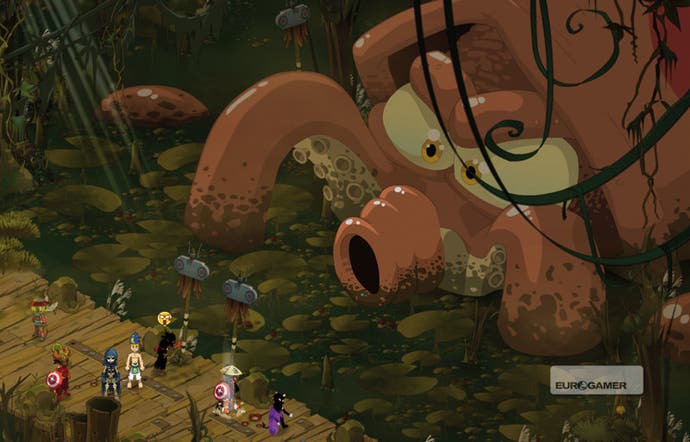Ankama's World
The French company quietly building a cartoon gaming empire.
It's an almost stereotypically gorgeous springtime Saturday in Paris, breezy and bright, and the bistros near the Porte de Versailles are spilling lunching locals and tourists all over the street. But the kids arriving by the tram-load, confused mothers in tow, aren't here to eat crepes, promenade or play football. They're filing into the angular, modernist and cavernously huge Paris Expo hall - familiar to your correspondent from Blizzard's gigantic Worldwide Invitational event in 2008 - to pay pilgrimage to the biggest game you've never heard of: Dofus.
What's more - despite the travel chaos caused by volcanic ash from Iceland this weekend - Ankama, the French game developer and animation studio hosting the event, is expecting 20 to 30,000 of them. And that isn't even the most eyebrow-raising figure we'll hear over the course of the day.
Ankama was a small web design firm based in the north of France when it launched Dofus in 2004. The unassuming online game belonged to a genre entirely of the studio's own devising: a tactical, turn-based MMORPG running in a lightweight Flash-based client, presented in isometric 2D, and graced with winsome artwork in an anime style. (If the latter seems an odd culture-clash to you, remember that France has had a much longer-standing and more overt love affair with Japanese comics and cartoons than any other Western nation. Hayao Miyazaki is practically a national hero here, and how else could Ulysses 31 have been brought into the world?)
With no experience of or access to the traditional videogames business, and no marketing or PR of which to speak, Ankama set about building its game organically by word of mouth among its fanbase of young French players. Dofus spread the way games used to - in the playground - only the playground was now connected, and the game itself was social. The barriers to entry were low - it would run on any old PC or laptop (or Mac), and you could play a substantial chunk of it for free. If you wanted to carry on, there was a subscription to pay, but it was pocket-money cheap: €5 a month.

In 2008, things really started to take off. There was an international boost from the launch of translated versions of the game, particularly in Spain and Latin America, but Dofus remained, and remains, a mostly domestic phenomenon. 60 per cent of players are in France, and the game is popular in the French-speaking communities of Switzerland, Belgium and Canada, too.
In the Anglo-centric eyes of the mainstream videogame business, that sounds marginal, but nothing could be further from the truth. Dofus boasts 30 million registered players, an insane figure even by the standards of free-to-play games, and approaching half the population of France. A million play it every day, a quarter of a million are playing it at any one time. But here's the truly significant and head-spinning fact: 3.5 million are paying subscribers. That's a full third of the audience for Blizzard's globally dominant subscription game, World of Warcraft.
Like so many MMO success stories - CCP, the Icelandic iconoclast behind EVE Online springs to mind, as does the UK's Jagex, creators of RuneScape - Ankama is an independently-minded outfit that has made up its own rules as it went along and completely ignored commercial convention. To this day, it still doesn't advertise, and it exists in a bubble with its community of teens, tweens and youthful otaku. It's just that that bubble is vast. And it's getting hard to ignore.

